Si vous avez déjà eu du mal avec des skis lourds ou vous êtes senti épuisé après seulement quelques descentes, votre équipement ne correspond peut-être pas à votre niveau de forme physique. Choisir les bons skis ne dépend pas seulement de la compétence - il s'agit de trouver un équipement qui travaille avec votre corps, pas contre lui. Par exemple, des skis plus courts et légers comme les produits Snowfeet peuvent réduire la fatigue et rendre le ski plus facile pour tous, des débutants aux pros expérimentés.
Voici le résumé rapide :
- La forme compte : Des jambes plus fortes et un meilleur cardio vous permettent de gérer des skis plus longs et plus lourds. Sinon, les skis courts sont vos meilleurs alliés.
- L'atout de Snowfeet : Leurs short skis (44–120 cm) sont plus légers, plus faciles à contrôler, et compatibles avec des chaussures d'hiver classiques - pas besoin de bottes spéciales.
- Pourquoi des skis courts ? Moins de fatigue, apprentissage plus rapide, et plus de plaisir. Parfait pour les débutants ou les skieurs occasionnels.
Que vous débutiez ou cherchiez une balade tranquille, Snowfeet offre une solution simple et portable pour profiter des pistes sans les contraintes du matériel traditionnel. Décomposons cela.
Comment votre niveau de forme et votre force influencent le ski
Pourquoi votre forme et votre force comptent pour le ski
Votre forme et votre force jouent un rôle énorme dans vos performances sur les pistes. Chaque virage, arrêt et ajustement dépend de votre condition physique. Le ski sollicite beaucoup vos jambes, qui doivent supporter des charges variables selon la vitesse, le terrain et l'état de la neige.
Prenons l'exemple des virages en slalom géant. Ils exigent une force et un contrôle sérieux. Des études montrent que lors de ces virages, les skieurs d'élite sollicitent leurs quadriceps de manière extrême - l'activation musculaire excentrique dure deux fois plus longtemps et est plus intense que la phase concentrique. Cela souligne à quel point force et contrôle sont essentiels pour gérer les forces en jeu lors d'une descente.
La forme cardiovasculaire est un autre facteur clé. L'effort de votre cœur et de vos poumons dépend de facteurs comme votre vitesse, la précision de vos virages, la pente, et même l'état de la neige. Les skis traditionnels de marques comme Rossignol, Atomic, Head et Elan ne font qu'ajouter au défi. Leur construction plus lourde et l'effort nécessaire pour un contrôle précis peuvent rapidement vous épuiser. Si votre forme n'est pas au rendez-vous, votre technique peut se dégrader, rendant le contrôle plus difficile. Et quand la fatigue s'installe, le risque de blessure augmente.
C'est là que disposer du bon équipement adapté à votre niveau de forme physique fait toute la différence.
Comment les produits Snowfeet* conviennent à tous les niveaux de forme physique
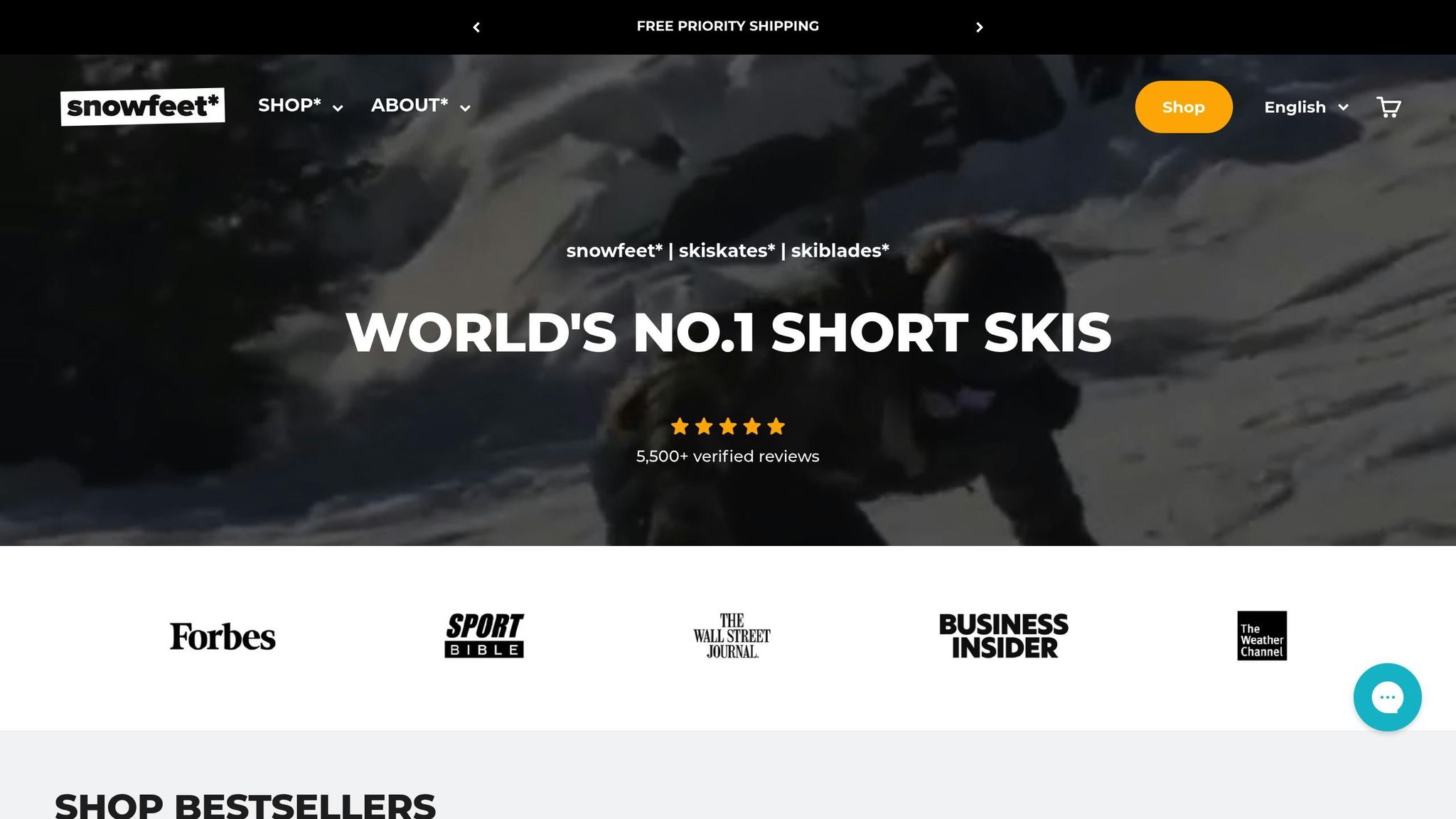
Les produits Snowfeet* sont conçus pour fonctionner avec votre corps, contrairement aux skis traditionnels de marques comme Rossignol ou Head, qui peuvent augmenter les exigences physiques. Les designs traditionnels suivent souvent l'approche « plus long est mieux », ce qui peut nécessiter plus de force pour tourner et s'arrêter. Snowfeet*, en revanche, renverse la tendance avec des skis plus courts, comme leurs Skiskates de 44 cm (environ 17 pouces) et leurs Skiblades de 65 cm (environ 26 pouces). Ils sont conçus pour rendre le ski plus facile, pas plus difficile.
Les skis plus courts sont naturellement plus faciles à contrôler. Ils sont plus légers, moins encombrants et demandent moins d'effort pour tourner, vous permettant de vous concentrer sur votre technique plutôt que de lutter avec un équipement lourd. Ce design léger réduit la fatigue, rendant le ski plus facile. Pour les débutants ou ceux qui ont des difficultés d'équilibre, c'est un énorme avantage. De plus, être plus proche de la neige aide à améliorer l'équilibre et réduit les risques de chute.
Les produits Snowfeet* excellent également en matière de maniabilité. Que vous slalomiez entre les arbres, naviguiez dans les bosses ou affrontiez des espaces étroits, leurs skis répondent à vos mouvements sans exiger une force olympique. Par exemple, les Skiskates de 44 cm sont fabriqués en plastique léger et durable, ce qui minimise la fatigue souvent associée aux skis en bois traditionnels. Les Skiblades de 65 cm, avec leur construction en bois, offrent une performance solide tout en restant indulgents et beaucoup plus faciles à gérer que les options des marques comme Elan ou Head.
Ce qui distingue vraiment Snowfeet*, c'est la façon dont ils combinent le patinage et le ski en une expérience fluide. Vous pouvez pousser comme si vous patiniez et glisser sur la montagne avec un mouvement naturel et fluide qui ne dépend pas des bâtons. Cela engage tout votre corps pour l'équilibre, plutôt que de mettre tout le travail sur vos bras ou votre tronc. Que vous soyez un skieur occasionnel ou que vous repreniez les sports d'hiver, Snowfeet* facilite le plaisir des pistes, quel que soit votre niveau de forme physique.
Skis courts vs skis traditionnels et snowboards
Principales différences entre Snowfeet* et l'équipement traditionnel
La différence entre les produits Snowfeet* et l'équipement de ski traditionnel ne se limite pas à la taille. Les skis classiques de marques comme Rossignol, Atomic, Head ou Elan mesurent généralement entre 150 et 180 cm (5 à 6 pieds) et sont nettement plus lourds. Les snowboards, quant à eux, sont plus encombrants et plus difficiles à transporter.
Snowfeet* adopte une approche complètement différente. Leurs Skiskates de 44 cm sont fabriqués en plastique léger et durable, conçus pour la performance tout en restant beaucoup plus légers que les options traditionnelles. Grâce à leur taille compacte et leur construction en plastique, ils sont incroyablement portables - oui, vous pouvez littéralement les jeter dans un sac à dos.
Le poids joue un rôle énorme sur les pistes. Le matériel traditionnel demande plus d'effort pour manœuvrer et contrôler, surtout dans les virages. En revanche, le matériel Snowfeet* suit naturellement vos mouvements. La longueur plus courte réduit le levier, facilitant les virages et les arrêts sans se surmener.
Alors que les skis et snowboards traditionnels exigent des positions spécifiques et un contrôle précis des carres, Snowfeet* simplifie l'expérience. Par exemple, leurs Skiskates, similaires aux skis mais ne mesurant que 44 cm, sont très réactifs et ne nécessitent pas de techniques avancées.
La taille compacte et la légèreté des produits Snowfeet* les rendent accessibles à des personnes de niveaux de force variés, offrant une expérience plus conviviale.
Comparaison : Snowfeet* Short Skis vs Skis réguliers et Snowboards
Voici un aperçu rapide côte à côte de la façon dont Snowfeet* se compare au matériel traditionnel :
| Caractéristique | Produits Snowfeet* | Skis traditionnels (Rossignol, Atomic, Head, Elan) | Snowboards |
|---|---|---|---|
| Poids & Portabilité | Ultra-léger, se glisse dans un sac à dos | Lourd, nécessite des sacs à skis volumineux | Encombrant, nécessite des sacs spéciaux |
| Courbe d'apprentissage | Facile à prendre en main | Raide, nécessite souvent des cours | Modéré, axé sur l'équilibre |
| Effort physique requis | Effort minimal pour les virages et les arrêts | Effort élevé, surtout pour les jambes et le tronc | Modérée à élevée, entraînement complet du corps |
| Maniabilité | Extrêmement réactif | Moins maniable, nécessite une technique précise | Bon pour le carving, mais moins agile |
| Flexibilité du terrain | Fonctionne sur pistes, sentiers, snowparks et même dans les jardins | Idéal sur pistes damées | Principalement adapté aux pistes damées et aux snowparks |
| Complexité de l'équipement | Simple, pas besoin de bâtons | Nécessite bâtons, chaussures et fixations | Nécessite des chaussures et fixations spécifiques |
| Facteur fatigue | Moins fatigant pour les genoux | Plus épuisant, surtout pour les débutants | Fatigue modérée selon les conditions |
Cette comparaison montre pourquoi les produits Snowfeet* rendent le ski plus accessible. Ils sont conçus pour réduire la fatigue physique et raccourcir la courbe d'apprentissage, ce qui en fait une excellente option pour quiconque souhaite profiter des pistes sans les contraintes du matériel traditionnel.
Les snowblades traditionnels mesurent généralement entre 70 cm et 100 cm, mais Snowfeet* propose quelque chose d'encore plus compact, avec des Skiblades à 65 cm et des Skiskates à seulement 44 cm.
En réduisant l'effort physique nécessaire, Snowfeet* offre une alternative plus douce pour votre corps. Alors que le ski traditionnel exige souvent des quadriceps puissants et un haut niveau de forme physique, les produits Snowfeet* demandent beaucoup moins de force pour des manœuvres de base comme tourner ou s'arrêter, ce qui les rend parfaits pour les débutants ou toute personne moins expérimentée.
Le contrôle est une autre caractéristique remarquable. Les skiboards sont connus pour leur réactivité, vous permettant de vous concentrer sur le plaisir de la glisse plutôt que de lutter avec un équipement lourd. La liberté de mouvement que procurent les skis plus courts est particulièrement utile pour les débutants ou pour affronter des terrains difficiles.
Si vous vous inquiétez de votre forme physique ou de votre force, le choix est clair. Le matériel Snowfeet* facilite la maîtrise des bases, pour que vous puissiez passer plus de temps à vous amuser et moins à lutter avec la technique.
Comment choisir les skis parfaits | Guide complet
Quel modèle Snowfeet* correspond à votre niveau de forme physique
Choisir le bon modèle Snowfeet* ne dépend pas seulement de la préférence personnelle - il s'agit aussi de l'adapter à votre niveau de forme physique et au défi que vous êtes prêt à relever sur les pistes. Contrairement aux marques de ski traditionnelles qui proposent souvent des options uniques, Snowfeet* a conçu des modèles adaptés à différents niveaux de force et d'endurance. L'objectif ? Vous aider à profiter d'un contrôle maximal et de plaisir en skiant.
Pour les débutants et les niveaux de forme physique faibles
Si vous débutez ou préférez quelque chose de moins exigeant physiquement, les modèles plus courts sont votre meilleur choix. Les Mini Ski Skates (38 cm), au prix de 150 $, et les Skiskates (44 cm), à partir de 390 $, sont d'excellentes options adaptées aux débutants.
Les Mini Ski Skates sont super faciles à utiliser puisqu'ils se fixent directement à vos chaussures d'hiver (pas aux boots de snowboard). Leur taille compacte de 38 cm signifie que vous dépenserez moins d'énergie pour tourner ou vous arrêter, ce qui en fait un choix solide si vous débutez sur les pistes. De plus, ils sont légers et assez petits pour se glisser dans votre sac à dos - fini de traîner un équipement lourd.
Pour un niveau supérieur, les Skiskates de 44 cm offrent un design plus durable avec une construction en bois. Ils restent légers et faciles à manier mais offrent un peu plus de performance pour ceux prêts à passer au niveau supérieur. Les deux modèles sont parfaits pour les débutants qui veulent du contrôle sans effort inutile.
Pour les niveaux intermédiaires ou de forme physique moyenne
Si vous êtes quelque part au milieu - à l'aise sur les pistes mais pas encore prêt pour les choses avancées - les Skiblades (65 cm), à partir de 450 $, offrent un excellent équilibre. Ils sont faciles à manier mais vous permettent quand même de prendre un peu de vitesse, ce qui les rend idéaux pour ceux avec une force et une forme physique moyennes.
À 65 cm, ces skiblades offrent plus de stabilité que les modèles plus courts tout en restant beaucoup plus faciles à gérer que les skis de longueur complète de marques comme Rossignol ou Atomic. Ils sont parfaits pour le carving et même un peu de fun en snowpark. Vous aurez un avant-goût de la performance du ski traditionnel sans la brûlure des jambes qui l'accompagne souvent. De plus, ils sont excellents pour développer vos compétences tout en gardant les choses gérables.
Pour les niveaux avancés ou une excellente condition physique
Si vous êtes en pleine forme et souhaitez une expérience plus intense, optez pour les modèles plus longs. Les Skiblades (99 cm), à 490 $, ou les Short Skis (120 cm), à partir de 690 $, sont conçus pour la vitesse et le défi tout en restant plus faciles à manier que les skis standards.
Les Skiblades de 99 cm sont conçus pour les utilisateurs avancés qui aiment le carving agressif ou affronter la poudreuse. Ils offrent beaucoup des avantages des skis plus longs sans l'effort épuisant que demandent les modèles traditionnels de 150–180 cm.
Pour ceux qui recherchent une expérience de ski proche du style traditionnel, les Short Skis de 120 cm sont la solution. Ils offrent de hautes performances mais avec moins d'effort physique comparé aux skis de longueur complète. Que vous aimiez le carving ou naviguer en poudreuse, ces skis vous permettent de repousser vos limites.
Si les figures et le skating sont plus votre style, les snowblades plus courts (65–85 cm) sont mieux adaptés. En revanche, les snowblades plus longs (90–120 cm) excellent en carving et en gestion de la poudreuse. Avec cette gamme, les utilisateurs avancés peuvent choisir un modèle qui correspond à leur style de ski et aux conditions qu'ils rencontrent habituellement.
Quel que soit le modèle, toutes les options Snowfeet* demandent moins d'effort que les skis traditionnels, ce qui change la donne pour tous ceux qui veulent profiter des pistes sans se surmener.
sbb-itb-17ade95
Comment choisir et utiliser les Short Skis Snowfeet*
Choisir le bon modèle Snowfeet* et bien le régler peut faire une énorme différence dans votre expérience de ski. Contrairement aux marques traditionnelles comme Head ou Elan, qui ont souvent des processus d'ajustement compliqués, les produits Snowfeet* sont simples et conviviaux. Voici ce que vous devez savoir pour commencer.
Choisir la bonne longueur et le bon modèle
Choisir le bon modèle Snowfeet* dépend de quelques facteurs clés : votre taille, poids, niveau, le terrain que vous préférez et votre style de ski. La bonne nouvelle ? Les skis courts comme Snowfeet* ne nécessitent pas le même niveau de précision dans la taille que les skis traditionnels. Pour la plupart des adultes entre 1,63 m et 1,88 m, il y a probablement un modèle Snowfeet* qui vous conviendra.
- Le terrain compte : Si vous restez sur des pistes damées ou dans des snow parks, les modèles plus courts comme les Skiskates (44 cm) ou Mini Ski Skates (38 cm) sont parfaits. Pour le ski en poudreuse, les Short Skis plus longs de 120 cm offrent une meilleure flottaison sans l'effort nécessaire avec les skis traditionnels de 150–180 cm de marques comme Rossignol ou Atomic.
- Style de ski : Les Skiblades de 65 cm sont parfaits pour les figures freestyle et le fun dans les snow parks, mélangeant ski et skating. Si vous aimez le carving, optez pour les modèles de 90 cm. Les débutants ou ceux qui veulent plus de stabilité apprécieront les options de 120 cm.
Oubliez les règles de taille basées sur le genre dépassées. Concentrez-vous sur votre niveau de forme physique et la façon dont vous comptez utiliser vos Snowfeet*. Une fois que vous avez choisi votre modèle, bien le configurer vous garantira d’en tirer le meilleur parti.
Conseils pour l’équipement et la configuration
Après avoir choisi le bon modèle, bien le configurer est la clé pour obtenir la meilleure performance. L’un des aspects les plus cool de Snowfeet* ? Vous n’avez pas besoin de chaussures de ski coûteuses.
- Compatibilité des chaussures : Les Mini Ski Skates (38 cm) se fixent directement sur vos chaussures d'hiver. D'autres modèles fonctionnent avec des chaussures d'hiver ou des boots de snowboard, couvrant la plupart des tailles (6–13 US / 38–47 EU).
- Réglage des fixations : C’est super simple. Tout ce dont vous avez besoin est un tournevis pour ajuster les fixations à la taille de votre chaussure. Changez les sangles si nécessaire pour un ajustement parfait. Pas besoin des réglages compliqués des skis traditionnels.
- Entretien de base : Gardez vos Snowfeet* en parfait état en fartant régulièrement les semelles et en huilant les carres métalliques pour éviter la rouille et améliorer le contrôle. De plus, ils sont faciles à transporter - il suffit de les jeter dans votre sac à dos, et vous êtes prêt à partir.
Préparation physique et exercices d'échauffement
Bien que Snowfeet* soient moins exigeants que les skis classiques, un peu de préparation peut rendre votre temps sur les pistes encore meilleur. S'échauffer et renforcer son corps peut vous aider à rester énergique et à réduire la fatigue.
- Bases de l'échauffement : Snowfeet* demandent de la concentration et un peu de technique pour maîtriser. Commencez sur un terrain plat pour vous familiariser avec le mouvement unique de patinage que ces mini skis offrent.
-
Techniques clés :
- Position : Gardez vos pieds écartés à la largeur des épaules et votre poids équilibré sur le milieu et l'arrière de vos pieds. Évitez de vous pencher trop en avant.
- Mouvement : Entraînez-vous au mouvement de patinage sur des pentes douces pour gagner en confiance.
- Arrêt : Utilisez les carres métalliques pour pousser latéralement avec une force équilibrée, rendant l'arrêt facile et contrôlé.
Renforcer la force et l'endurance est aussi une bonne idée, surtout si vous prévoyez des sessions plus longues. Des exercices comme les squats, les fentes, les montées sur les mollets et les planches peuvent améliorer la force de vos jambes et la stabilité de votre tronc.
Enfin, allez-y doucement. Commencez par des descentes plus courtes et progressez progressivement. Cette approche graduelle aide votre corps à s'adapter et rend votre expérience Snowfeet* amusante et gérable pour tous les niveaux de forme physique.
Pourquoi Snowfeet* est le meilleur choix
Points clés à retenir
Quand vous pesez vos options pour l'équipement de neige, Snowfeet* se démarque pour plusieurs raisons. Que vous soyez débutant ou skieur expérimenté, ces mini skis s'adaptent à un large éventail de niveaux, offrant une polyvalence que les skis traditionnels ne peuvent tout simplement pas égaler.
La portabilité change la donne. Contrairement aux skis traditionnels encombrants qui nécessitent des barres de toit ou des sacs surdimensionnés, Snowfeet* se glissent facilement dans un sac à dos. Vous pouvez les emmener partout - sentiers de randonnée, pistes de ski de fond, pistes de ski alpin, ou même la colline à luge de votre quartier. Pas de tracas supplémentaires, il suffit de les prendre et de partir.
Il y a aussi l'adaptabilité au terrain. Alors que les skis traditionnels sont principalement limités aux pistes damées, Snowfeet* ouvre un tout nouveau monde de possibilités. Ils sont conçus pour gérer tous types de terrains, rendant les sports de neige accessibles au-delà des stations coûteuses.
Un autre grand avantage ? Agilité et maniabilité. Snowfeet* et les mini skis similaires comme les Skiskates sont incroyablement réactifs, ce qui facilite les virages, les arrêts et le contrôle de vos mouvements. Contrairement aux skis plus longs qui peuvent sembler encombrants, ceux-ci sont parfaits pour les skieurs récréatifs cherchant une glisse fluide. De plus, vous n'avez pas besoin de chaussures de ski spéciales - ils fonctionnent avec vos chaussures d'hiver habituelles. Moins d'équipement à acheter et plus de liberté pour profiter.
Pourquoi vous devriez essayer Snowfeet*
Snowfeet* enlève l'intimidation des sports de neige. Ces mini skis sont légers, faciles à utiliser et s'adaptent à votre niveau de forme physique plutôt que d'exiger une force physique maximale.
Les débutants apprécieront la courbe d'apprentissage courte. Contrairement aux skis traditionnels, qui peuvent sembler intimidants, les Snowfeet* sont plus simples à contrôler. Cela permet aux nouveaux skieurs de se concentrer sur les bases sans se sentir dépassés.
Il y a aussi le facteur coût. Le ski traditionnel s'accompagne souvent d'un prix élevé - skis, chaussures, fixations et tout le reste s'additionnent rapidement. Les produits Snowfeet*, en revanche, commencent à seulement 150 $ pour les Mini Ski Skates. Mieux encore, ils sont compatibles avec les chaussures d'hiver que vous possédez déjà, ce qui vous fait encore plus économiser.
Snowfeet* offre aussi une commodité inégalée. Oubliez les voyages compliqués chargés d'équipements lourds et de forfaits de remontées coûteux. Avec Snowfeet*, vous pouvez les glisser dans votre sac à dos et partir pour une aventure spontanée dans la neige. Ce genre de flexibilité facilite la pratique des sports d'hiver plus souvent - et sans se ruiner.
Et n'oublions pas le plaisir du skiskating. C'est un mélange unique de ski et de patinage qui apporte une touche nouvelle au jeu dans la neige. Il ne s'agit pas seulement de descendre une pente à toute vitesse ; c'est découvrir une toute nouvelle façon de bouger et d'explorer. Que vous ayez des défis de forme physique, un budget limité ou que vous cherchiez simplement quelque chose de différent, Snowfeet* offre une expérience que le matériel traditionnel ne peut tout simplement pas égaler. Parfois, plus petit rime vraiment avec mieux.
FAQ
Quel modèle Snowfeet est le mieux adapté à mon niveau de forme physique et à mon expérience en ski ?
Choisir le bon modèle Snowfeet
Choisir le modèle Snowfeet parfait dépend de quelques facteurs clés : votre niveau de forme physique, votre force et votre expérience en ski. Si vous débutez ou que vous n'avez pas beaucoup de force physique, les modèles plus courts et plus légers comme les Skiskates de 44 cm sont une option fantastique. Ils sont faciles à gérer, demandent moins d'effort et vous aident à prendre confiance pendant que vous vous familiarisez avec la pratique.
D'un autre côté, si vous êtes un skieur plus expérimenté ou avez la force pour gérer des vitesses plus élevées, les Skiblades de 65 cm pourraient mieux vous convenir. Ils offrent une meilleure stabilité et performent bien lorsque vous dévalez les pistes. Contrairement aux skis traditionnels des marques comme Rossignol ou Atomic, l'équipement Snowfeet mise tout sur le léger, portable et simple à utiliser. C'est un choix amusant et accessible pour tous, quel que soit leur niveau.
Les produits Snowfeet conviennent-ils à tous les terrains ou fonctionnent-ils mieux dans des conditions spécifiques ?
Les produits Snowfeet sont conçus pour s'amuser sur les pistes damées, les parcs à neige et autres endroits bien entretenus. Grâce à leur petite taille et leur légèreté, ils sont un excellent choix pour les sentiers lisses, les sorties légères en hors-piste et les sessions freestyle ludiques.
Cela dit, ils ne sont pas la meilleure option pour la poudreuse profonde, le terrain raide ou les zones non damées, surtout si la neige est glacée ou dure. Bien que Snowfeet soit facile à utiliser et polyvalent, ils ne sont pas conçus pour des aventures extrêmes hors-piste ou pour affronter des pistes très techniques. Pour la plupart des skieurs et riders, ils offrent une manière amusante et accessible de profiter des pistes - lorsqu'ils sont utilisés dans les bonnes conditions.
Qu'est-ce qui fait de Snowfeet un meilleur choix pour les débutants comparé aux skis ou snowboards traditionnels ?
Les produits Snowfeet offrent d'excellents avantages pour les débutants, en faisant une alternative solide aux skis ou snowboards traditionnels. Tout d'abord, leur design compact et léger vous donne beaucoup plus de contrôle, ce qui est un énorme coup de pouce pour la confiance quand vous débutez. Contrairement aux skis longs et lourds des marques comme Rossignol ou Atomic, la longueur plus courte des Snowfeet vous permet de tourner plus rapidement et de gérer les pistes avec aisance. C'est comme s'ils avaient été conçus pour éliminer le stress de l'apprentissage.
Un autre grand avantage ? Vous n'avez pas besoin d'équipement sophistiqué. Snowfeet fonctionne avec des chaussures d'hiver classiques, vous pouvez donc oublier les fixations encombrantes et les chaussures spécialisées. Cela rend toute l'expérience plus simple et bien plus pratique. Pour les débutants, c'est une façon facile et amusante de se lancer dans les sports d'hiver sans la courbe d'apprentissage raide ni la fatigue physique souvent associée à l'équipement traditionnel.
Articles de blog connexes
- Vos skis sont-ils trop longs ? Signes, problèmes, et pourquoi des skis plus courts sont souvent meilleurs
- "Au secours ! Mes skis sont trop longs !" - Que faire et comment le savoir
- Calculateur et tableau des tailles de ski [2025] : Trouvez votre longueur et largeur parfaites
- Choisir la bonne taille de ski pour les jeunes : Trouvez l'ajustement parfait pour les enfants en pleine croissance







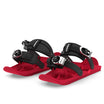
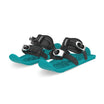













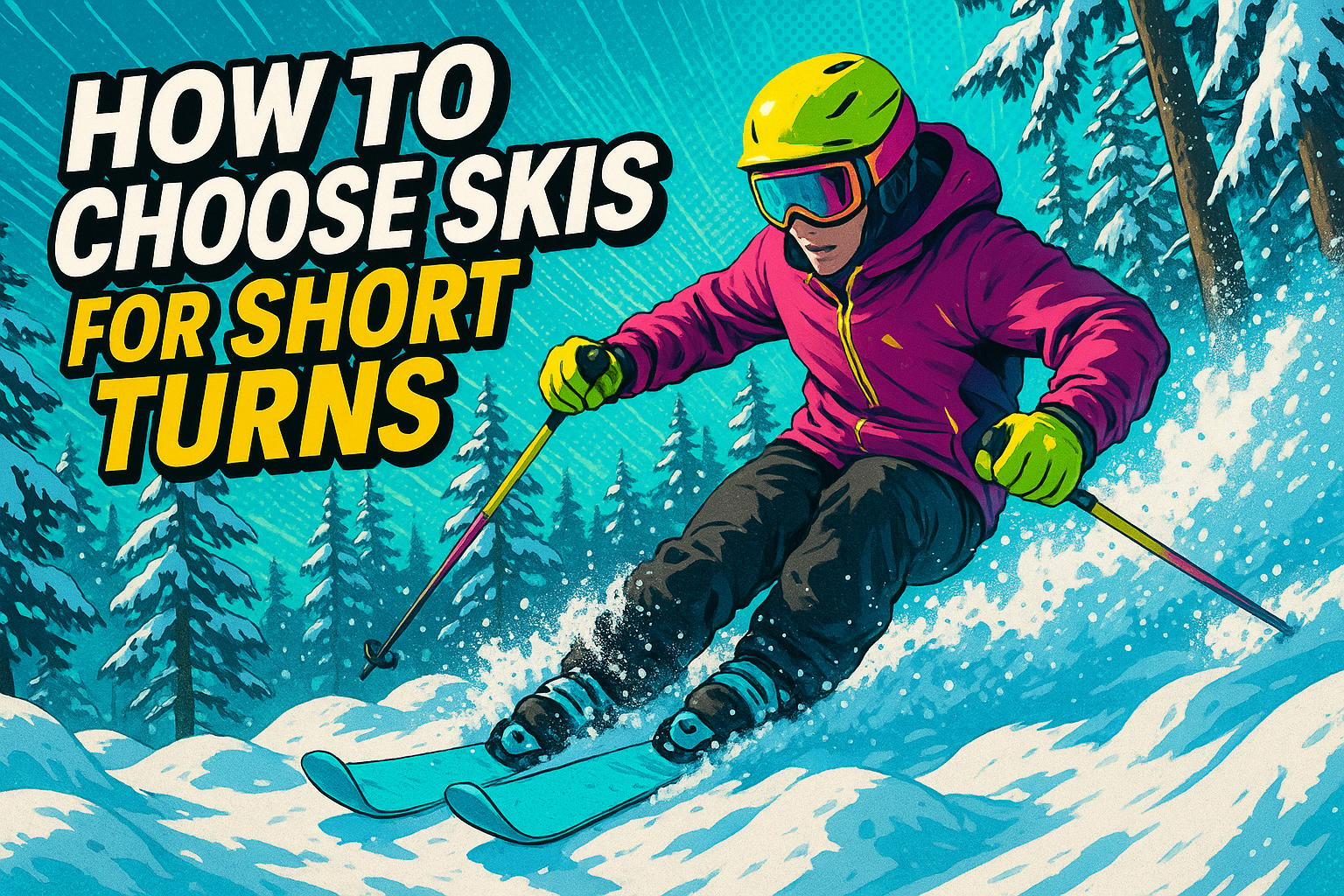




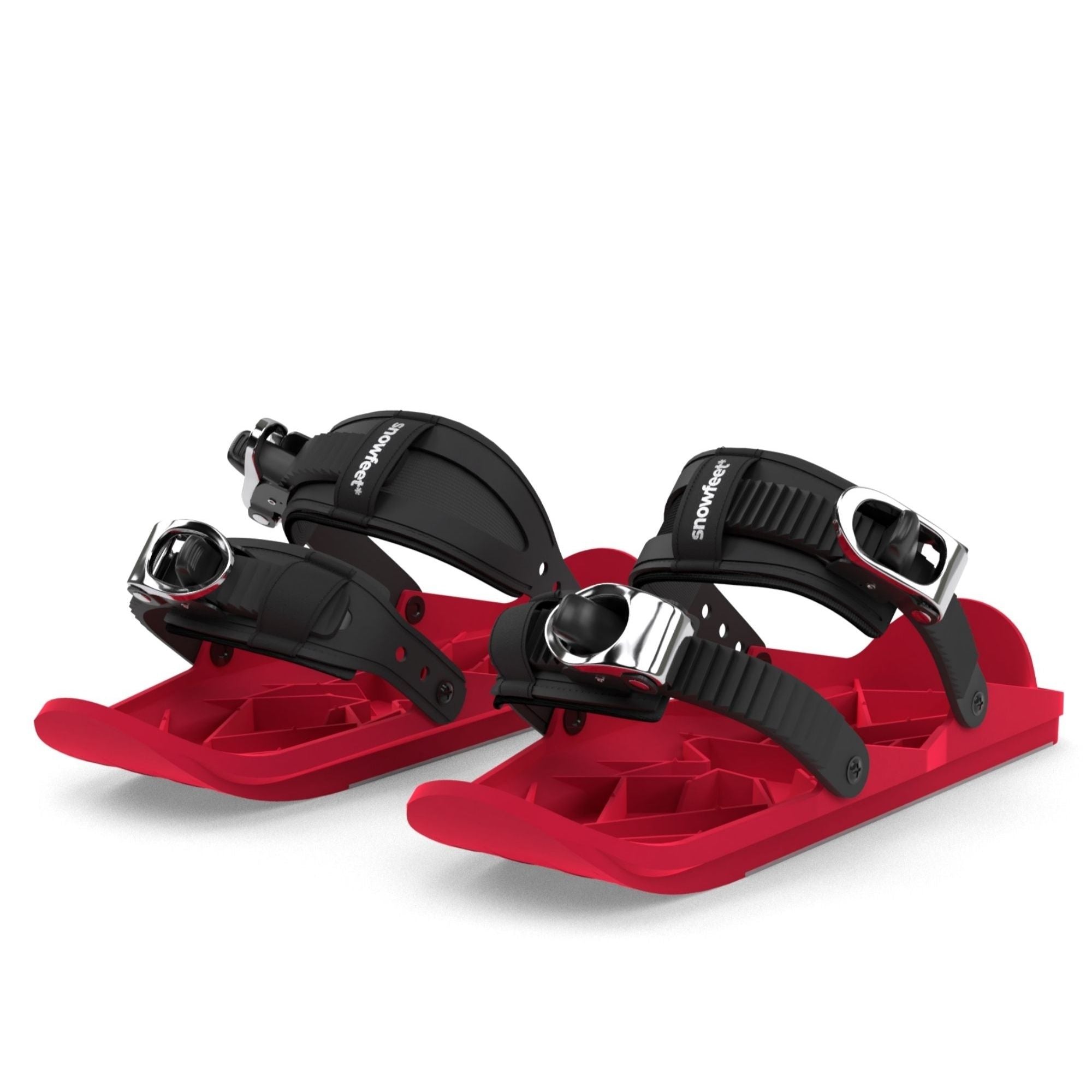
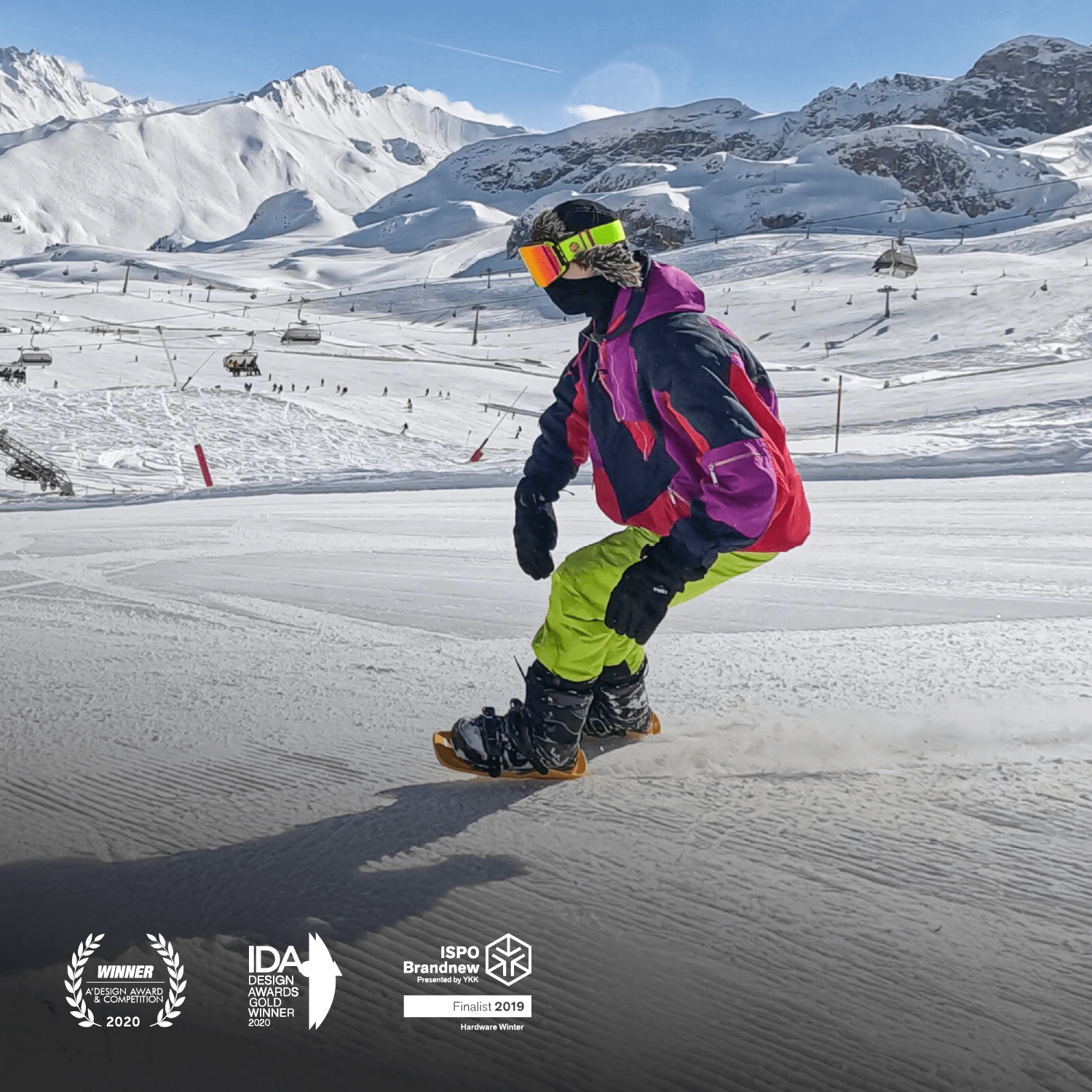




Laisser un commentaire
Ce site est protégé par hCaptcha, et la Politique de confidentialité et les Conditions de service de hCaptcha s’appliquent.